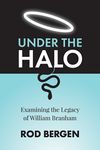The False Doctrines of the Message

By smooth talk and flattery they deceive the minds of naive people. (Romans 16:18)[1]
What is False Doctrine?
False doctrine is:
1. Plausible. If false doctrines didn't hold together at all, they would never be accepted. No one is going to be led astray by a false teaching that makes no sense or appears wrong.
- False teachings can be compared to counterfeit money. It has to look and feel like the thing in order for people to accept it as real money. The counterfeit is made up of the same things as the real—a certain type of paper, colors and designs, etc. It looks and feels so much like the real that it takes those trained to recognize the counterfeit to realize that it is not genuine.[2]
2. Based on scripture. No one would follow a false doctrine, if it didn't have some basis in the Bible. The problem is that false doctrine is only partly correct, it is not wholly correct.
We see this reflected in Acts 20:30:
- Yes, even from among yourselves people will arise, saying things which will distort the truth, and they will draw the disciples away after them.[3]
Also in 2 Peter 3:15-16:
- Our beloved brother Paul has written to you about all this, according to the wisdom that has been given him, speaking about these things as he does in all his letters. There are some things in them which are difficult to understand. Untaught and unstable people twist his words to their own destruction, as they do with the other scriptures.[4]
When you read the label on a package of rat poison, it reveals that less than 1% is poison, and the more than 99% is tasty, nutritious food for the rat. However, that 1% is enough poison to kill the rat if he eats it for a short period of time. Most of the rat killing food must be real food and appealing to the rat in order to get him to accept and eat the part that is poison. False doctrine must have enough biblical truth to sound biblical in order to entice a Christian to accept the false part. It can be 99% accurate Biblical truth, but the one percent false can be enough to kill the spiritual life of the person who believes it and begins to practice it.[5]
3. Self-centred and self-serving. False teachers boast much about love to God, but they wholly fail under the test of love to men.[6]
4. Reductionist in nature. The greatest heresies do not come about by straightforward denial. They happen when an element which may even be important, but isn’t central, looms so large that people can’t help talking about it, fixating on it, debating different views of it as though this were the only thing that mattered. They mistake part of the truth for the whole truth.[7]
- Reductionism leads to a preoccupation with one thing — the monomaniac or fanatic is the result. The fanatic is a person with little empathy, humility, or humanity. Consider the suicide bombers of our day as the exemplary fanatics. Such people are “radicalized” by over-focusing on a reductionist Jihadist ideology by which all else is subsequently measured. They become radical sectarians, losing all meaningful relationship and perspective. [8]
5. Divisive, creating disunity. [9]
- May God bless you with discomfort at easy answers, half-truths, superficial relationships, so that you will live deep within your heart. (Author Unknown)[10]
The major false doctrines propagated by William Branham and his followers
- The Serpent's Seed
- Anti-Intellectualism
- Can the Holy Spirit abandon you?
- Can you lose your healing?
- The Evidence of the Holy Spirit
- Marriage and Divorce
- Some Christians had to believe Satanic doctrine
- Long Hair or Uncut Hair
- The Fulfillment of Malachi 4:5
- Justification, Sanctification, and the Holy Spirit
Footnotes
- ↑ The New International Version (Grand Rapids, MI: Zondervan, 2011), Ro 16:18.
- ↑ Bill Hamon, How Can These Things Be?: A Preacher and a Miracle Worker but Denied Heaven! (Shippensburg, PA: Destiny Image® Publishers, Inc., 2014), 170.
- ↑ John Goldingay and Tom Wright, The Bible for Everyone: A New Translation (London: SPCK, 2018), Ac 20:30.
- ↑ John Goldingay and Tom Wright, The Bible for Everyone: A New Translation (London: SPCK, 2018), 2 Pe 3:15–16.
- ↑ Bill Hamon, How Can These Things Be?: A Preacher and a Miracle Worker but Denied Heaven! (Shippensburg, PA: Destiny Image® Publishers, Inc., 2014), 169.
- ↑ Robert Tuck, I & II Peter, I, II & III John, Jude, Revelation, The Preacher’s Complete Homiletic Commentary (New York; London; Toronto: Funk & Wagnalls Company, 1892), 315.
- ↑ Tom Wright, Acts for Everyone, Part 2: Chapters 13-28 (London: Society for Promoting Christian Knowledge, 2008), 137–138.
- ↑ Hirsch, Alan; Nelson, Mark. Reframation: Seeing God, People, and Mission Through Reenchanted Frames (pp. 49-50). 100 Movements Publishing. Kindle Edition.
- ↑ R. C. H. Lenski, The Interpretation of St. Paul’s First and Second Epistle to the Corinthians (Minneapolis, MN: Augsburg Publishing House, 1963), 752.
- ↑ Ken Gnanakan, Biblical Ethics: Ecological Responsibility (Bangalore, India: Theological Book Trust, 2004), 102.